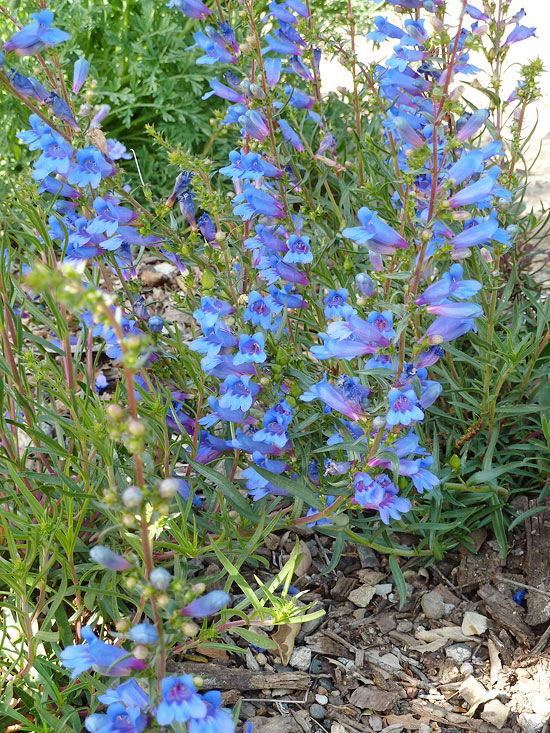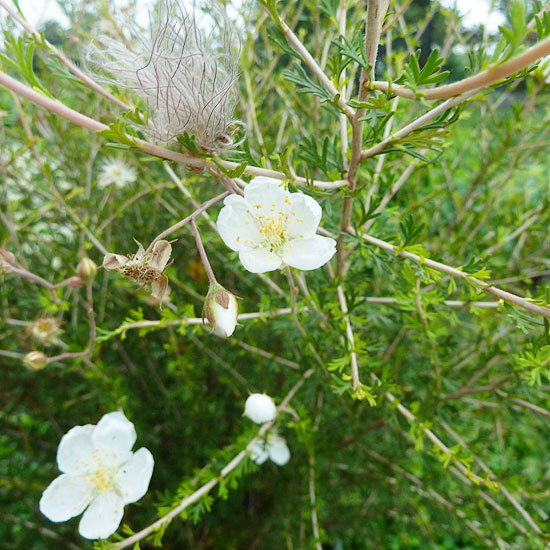





 Penstemon
Penstemon
If variety is the spice of life, then gardeners in Utah have a very colorful time in the out-of-doors. From just 6-18 inches of annual precipitation to the stresses of high elevations in mountain areas, Utah landscaping presents different challenges based on where in the state you're gardening. "We're very diverse with a lot of different eco and soil types," says David Anderson, director of Utah State University's Utah Botanical Center. "We have a pretty big swing in hardiness Zones and one of the most diverse plant palettes in the U.S."
See our Zone map.
Learn more about hardiness Zones.
Here's how to turn those Utah landscaping obstacles into positives.
continue reading belowLocated in the north-central part of the state (from Ogden to about Springville with the Wasatch mountain range as a backdrop), the Wasatch front has seen explosive population growth, which in turn has put a strain on the area's already limited water resources. "There are some long-range challenges because, although we have a good system of reservoirs that store snow from the winter, it is getting more difficult and more expensive to store and deliver water," Anderson says.
For Utah landscaping in this region, which includes USDA Zones 4-5, plants that aren't water hogs do best. In addition to better adapting to present-day water pressures, water-savvy plants also do well in the region's geography -- essentially a high mountain, cold desert environment. "We have a much richer palette of plants that are either indigenous to our area or well adapted, so you don't have to landscape with solely gravel and rocks unless you choose to," Anderson says.
A few of Anderson's favorite plants for Utah landscaping: Rocky Mountain maple with beautiful autumn display and native penstemons with a wide range of bloom times and colors.
Learn more about penstemons.
 Apache plume
Apache plume
It may be in the same state, but the southwestern portion of Utah is a world away from landscaping conditions in the Wasatch front. "The elevation is much less -- about 2,000 feet at its lowest -- and it's much drier," Anderson says. "It gets cold there but rarely gets into the teens, so while you have fewer low-temperature challenges, there's much less moisture and it's hotter in the summer."
The region, which gets at most 12 inches of rain a year, is enduring even more restrictive water issues than the Wasatch front. For Utah landscaping, that means it's harder for plants to get established, and varieties that are "fringe" plants will struggle. "You'll go there and see palm trees that are struggling, but if you're in Las Vegas, which is about two hours away, they'll thrive," Anderson says. "The cold really means that you have to choose carefully for your region."
Learn about xeriscaping.
Popular plants in this region for Utah landscaping include the pinyon pine and the desert evening primrose with its beautiful yellow flowers.
The dynamic landscapes and canyons of Moab and the Four Corners area of Utah also mean another change in elevation -- closer to that of the Wasatch front -- as well as even colder temperatures at times than in the southwestern portion of the state. "It means another modified palette of plants," Anderson says of the Utah landscaping area, which includes USDA Zones 5-6 and moisture of just 14 inches yearly.
But gardeners shouldn't be discouraged from Utah landscaping in this area, Anderson says. "There's a wonderful range of those kinds of plants. A personal favorite that does well in the southeast and southwest is yucca, with its spiked leaves and fragrant flowers."
Learn more about yucca.
Bristlecone pine is a good tree choice for high elevations, and Apache plume and littleleaf mock orange are beautiful flowering shrubs for Utah landscaping in the southeastern region.
Learn more about pines.
The challenge is finding the plants that work well. Take the time to learn about your soil, climate, and plant preferences before purchasing your landscape plants (a good place to start: the Utah State University Cooperative Extension gardening website at extension.usu.edu/yardandgarden). "You really need to check your label -- and believe it," Anderson says. "If it's a dry area, it may take plants longer to reach their mature height, and they may need a little more care and protection to thrive. One of the biggest mistakes people make is the improper selection and placement of plants."
Find landscape ideas for the Southwest.
Copyright © www.100flowers.win Botanic Garden All Rights Reserved